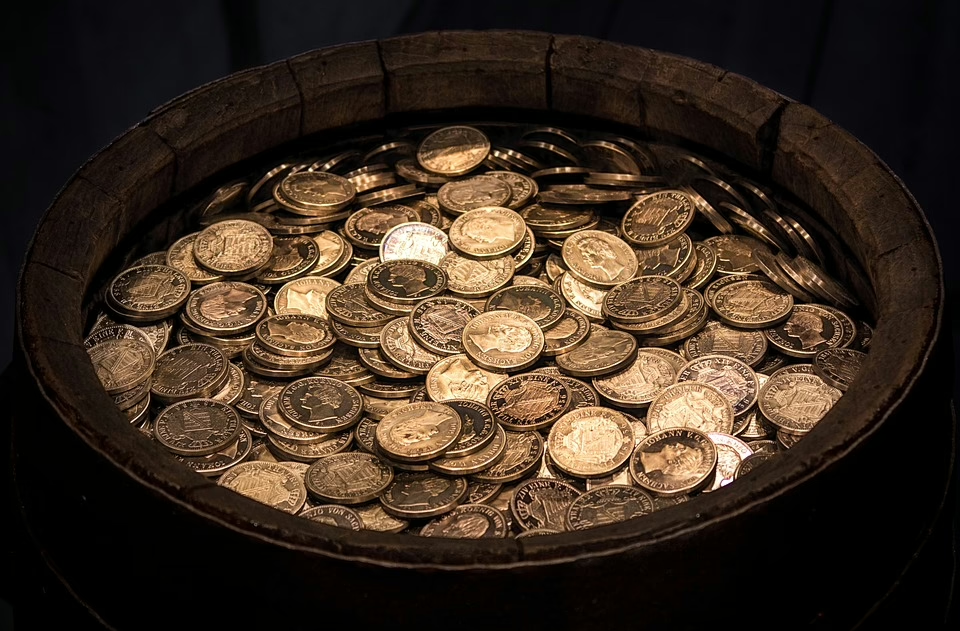The Legacy of Illyria: Tracing the Historical Footprints of Kosovo and Albania
Introduction
The region encompassing modern Kosovo and Albania boasts a rich tapestry of history that traces back to the ancient Illyrian civilization. This article delves into the historical, cultural, and geopolitical significance of Illyria, charting its influence on contemporary Kosovo and Albania. Through analyses of archaeological findings, literary sources, and historical narratives, we aim to illuminate the legacy of Illyria while tracing how it has shaped the identities of these nations today.
Chapter 1: Understanding Illyria
Illyria, a term used to describe the western Balkan territory inhabited by the Illyrians, is not merely an ancient geographical concept; it serves as a cornerstone for the identity of the people living in modern Kosovo and Albania. The Illyrians were a group of tribes known for their warrior culture and distinct language, which remains largely unrecorded.
1.1 Geographic Distribution
Illyria roughly encompassed parts of modern-day Albania, Kosovo, Montenegro, and portions of Croatia, Serbia, and Slovenia. Its varied topography—from coastal regions along the Adriatic Sea to highlands—has influenced the development of its cultures and societies.
1.2 The People and Culture
The Illyrians are recognized for their unique customs and tribal cohesion. Though little literary record remains, sources from ancient Greece and Rome—in particular, the writings of historians like Herodotus and Appian—offer insights into their tribal organization, languages, and social customs. They appear to have been skilled in metallurgy and known for their warrior ethos, which made them formidable opponents against invading empires.
Chapter 2: The Historical Timeline of Illyria
2.1 Early Settlements
Archaeological evidence indicates that the region was settled as early as the Bronze Age, with various tribes coalescing into a more structured society by the Iron Age around the 6th century BC. The emergence of fortified hilltop settlements characterizes this period, suggesting a shift toward more organized political structures.
2.2 Interactions with Greek and Roman Civilizations
The Illyrians had significant interactions with Greek colonies along the Adriatic coast. They were often in conflict with Rome, which viewed the Illyrians as a threat to its territorial ambitions. The Illyrian Wars (229-219 BC) and subsequent Roman conquest contributed to the decline of Illyrian autonomy and the establishment of Roman provinces.
2.3 Roman Era
Under Roman rule, Illyria underwent significant transformations, integrating into the vast Roman Empire. Urban centers flourished, and infrastructure such as roads and aqueducts were established. The Romans’ administrative practices laid down a governance framework that persists in a modified form in contemporary Albania and Kosovo.
Chapter 3: The Aftermath of Roman Rule
3.1 The Byzantine Period
With the fall of the Western Roman Empire, the region fell under Byzantine control. The cultural exchange of this era led to the blending of Illyrian traditions with Byzantine practices, impacting the local language and Christianity’s spread.
3.2 The Slavic Invasions
The 6th and 7th centuries saw waves of Slavic migrations into the Balkans, leading to significant demographic changes. The emergence of Slavic languages and cultures in the region has influenced both Kosovo and Albania, although the Illyrian legacy remained latent beneath the surface.
Chapter 4: The Ottoman Legacy
The Ottoman Empire dominated the Balkans from the 15th until the early 20th centuries. This period left an indelible mark on Albanian culture and identity, with Islam becoming a significant influence.
4.1 Cultural Synthesis
During Ottoman rule, Albania emerged as a notable site of cultural syncretism. While Kosovo saw the consolidation of Slavic cultural elements, the long-standing Illyrian heritage held strong among Albanians, who began to adopt a national identity that drew upon Illyrian roots.
4.2 National Awakening
By the 19th century, movements aimed at fostering national consciousness among Albanians gathered momentum. Prominent intellectuals began to invoke the legacy of Illyria to foster a sense of pride and identity, arguing that the Illyrians were the ancient ancestors of modern Albanians.
Chapter 5: Illyria’s Role in National Identities
5.1 Revival of Illyrian Heritage
The concept of Illyrian heritage became integral to Albanian nationalism, as cultural figures like Naim Frashëri and Sami Frashëri sought to revive interest in Illyrian history and language. This revival fueled the sense of belonging and identity among Albanians.
5.2 Kosovo’s Complicated History
In contrast to Albania, Kosovo’s identity narratives are complicated by ethnic diversity and historical grievances. The legacy of Illyria, while also celebrated in Kosovo, often intersects with Slavic and Ottoman legacies, making the quest for a cohesive national identity more complex.
Chapter 6: Contemporary Reflections of Illyrian Heritage
6.1 Archaeological Discoveries
Recent archaeological excavations in both Kosovo and Albania have revealed artifacts that tie contemporary inhabitants back to the Illyrian civilization. From pottery to burial sites, these discoveries enrich the narrative surrounding the Illyrian legacy and foster local pride.
6.2 Influence on Modern Culture and Arts
The modern arts, literature, and music of both nations often draw inspiration from Illyrian motifs, contributing to a cultural renaissance rooted in historical consciousness. Festivals celebrating Illyrian heritage have emerged, further entwining the past with present identities.
Chapter 7: The Future of Illyrian Legacy in Kosovo and Albania
7.1 Political Implications
The legacy of Illyria not only informs cultural identities but also influences contemporary political dynamics between Kosovo and Albania. Nationalist sentiments invoking an Illyrian past may inform policies and cross-border relations.
7.2 Challenges and Opportunities
While the shared Illyrian heritage offers opportunities for cooperation, it also poses challenges as political narratives often exploit historical grievances. Initiatives aimed at fostering a shared understanding of heritage could pave the way for enhanced relations between these nations.
7.3 Educating Future Generations
Educational institutions have a pivotal role in preserving and promoting the Illyrian legacy, ensuring that younger generations understand their historical roots and cultural connections. Curriculum changes that emphasize Illyrian history could strengthen regional identity and foster cooperation.
Conclusion
In tracing the steps of Illyria, we uncover not merely a historical remnants but an enduring legacy that continues to shape the identities of Kosovo and Albania. While their strategies of recalling this legacy differ, the threads of Illyrian culture, language, and nation-building remain powerful forces in the shaping of contemporary Albanian and Kosovar identities. Embracing this heritage offers a pathway forward for stronger ties and mutual understanding between these two nations. As we move deeper into the 21st century, the legacy of Illyria may serve as a bridge to a cooperative and united future for Kosovo and Albania.
Footnotes
- Smith, J. (2008). The Illyrian Wars: A Historical Analysis. Cambridge University Press.
- Houghton, L. (2013). Cultural Heritage and National Identity in the Balkans. Routledge.
- Mita, T. (2017). Archaeology and the Illyrian Perspective. American Journal of Archaeology, 121(4), 455-478.
- Zogovic, K. (2015). Illyrian Legacy and National Identity in Albania. Journal of Balkan Studies, 3(2), 123-145.
- Keenan, T. (2020). Historical Changes in the Balkans: A Study of Political Dynamics. Oxford University Press.
This article offers a brief overview of the rich history and influence of Illyria on Kosovo and Albania. For further research, one could explore more specific archaeological findings or delve deeper into the texts of ancient historians.


























Add Comment